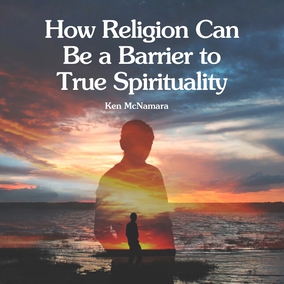The views expressed in our content reflect individual perspectives and do not represent the authoritative views of the Baha'i Faith.
The Aristotelian model of the universe in vogue at the time of Copernicus—and, later, Galileo—theorized that the center of a system was where the gross, heavy stuff collected.

Thomas Aquinas
In the Ptolemaic model the center represented the low point. Jewish philosopher Maimonides wrote that when it came to the cosmos, “the nearer the parts are to the centre, the greater is their turbidness, their solidity, their inertness, their dimness and darkness, because they are further away from the loftiest element, from the source of light and brightness.” His Christian contemporary, Thomas Aquinas, agreed that the Earth, having the central position in the universe, was “the most material and coarsest of all bodies.” He used the Latin word ignobilissima to refer to the Earth—not a good thing.
Some theologians, in fact, rejected heliocentrism as falsely exalting the Earth by placing the Sun—a symbol of the Divine and the source of light—in the lowly spot in which “the universe’s filth and ephemera collect,” as Galileo put it, and granting the Earth movement and a place among the stars.
This fails to support the idea that human worth is derived from the physical centrality of the ball of dust we all live on. As Maimonides implies, the Earth was the lowly, shadowy sphere over which the illumined realm of God arched. Growing up in a Christian household, I took the diminution of human physical worth as a given. In fact, a common argument against Christian belief is that it devalues humanity by suggesting that we are flawed.
When I observe Your heavens, the work of Your fingers, the moon and the stars, which You set in place, what is man that You remember him, the son of man that You look after him? – Psalm 8: 3-4.
Paradox? Not really. Passages in all scripture ascribe potential greatness to humankind—but that greatness has nothing to do with location, location, location, and everything to do with conditions inside the mind and soul of the human being.
The Baha’i scriptures, too, are replete with passages that make a point of the non-material nature of human value:
If true glory were to consist in the possession of such perishable things, then the earth on which ye walk must needs vaunt itself over you, because it supplieth you, and bestoweth upon you, these very things, by the decree of the Almighty. In its bowels are contained, according to what God hath ordained, all that ye possess. From it, as a sign of His mercy, ye derive your riches. Behold then your state, the thing in which ye glory! – Baha’u’llah, Gleanings from the Writings of Baha’u’llah, p. 250.
And:
Know ye not why We created you all from the same dust? That no one should exalt himself over the other. Ponder at all times in your hearts how ye were created. Since We have created you all from one same substance it is incumbent on you to be even as one soul, to walk with the same feet, eat with the same mouth and dwell in the same land, that from your inmost being, by your deeds and actions, the signs of oneness and the essence of detachment may be made manifest. – Baha’u’llah, The Hidden Words, p. 20.
The conflation of intellectual concepts with their physical analogues or metaphors has dogged mankind since we first attempted to “put into words what cannot be put into words” as my colleague, Ursula Le Guin has summed up as the writer’s job. We sometimes seem to have difficulty distinguishing fact from metaphor. How do we tell the difference? By reading scripture.
Religious scripture—and I’m not talking about just the Bible here—makes a distinction between a physical “place” and an intellectual or spiritual one. Its beautiful symbolism and rich imagery and deep metaphors all teach us to think beyond the literal. Even as scripture takes pains to rob us of our sense of entitlement due to our address, it stresses a different type of centrality that owes nothing to location.
But back to the question: Does the validity of all religion rest on the literal interpretation of a particular set of holy books (in this case, the Christian Bible)? I’d suggest that the answer to this is “of course not” simply because to insist on such dependence would be irrational.
Which brings us to an important point—does the Bible, in fact, teach that the Earth is the center of the solar system? Here, again, the myth collapses, for the Bible does not give the Earth a lofty place in relation to other bodies or the generic “heavens.” As Copernicus was aware, in the Bible (as in other scripture) the Earth actually symbolized grosser material concerns. The heavens were exalted. The heavens were the throne of God. The Earth was only His footstool:
But I tell you, don’t take an oath at all: either by heaven, because it is God’s throne; or by the earth, because it is His footstool… – Matthew 3:34-35a
So whence the myth? Dennis Danielson conjectures that there was a collision of a number of different world views as each new discovery changed the way we saw the universe. What’s fascinating to me about this is that as the telescope showed us more and more of the cosmos, two polar opposite reactions emerged. Many religious people react to scientific discovery as theologian Cotton Mather did, by exclaiming, “Great God! What a variety of worlds Thou hast created! . . . How stupendous are the displays of Thy greatness, and of Thy glory!” Others react as though science somehow contradicts religious teachings. Nothing, the Baha’i teachings say, could be farther from the truth:
It is impossible for religion to be contrary to science, even though some intellects are too weak or too immature to understand truth.
God made religion and science to be the measure, as it were, of our understanding. Take heed that you neglect not such a wonderful power. Weigh all things in this balance.
To him who has the power of comprehension religion is like an open book, but how can it be possible for a man devoid of reason and intellectuality to understand the Divine Realities of God?
Put all your beliefs into harmony with science; there can be no opposition, for truth is one. When religion, shorn of its superstitions, traditions, and unintelligent dogmas, shows its conformity with science, then will there be a great unifying, cleansing force in the world which will sweep before it all wars, disagreements, discords and struggles — and then will mankind be united in the power of the Love of God. – Abdu’l-Baha, Paris Talks, p. 145.
I have to admit that, in my own life, the more I know about the way the Universe works, the deeper my appreciation of God grows:
Science is an effulgence of the Sun of Reality, the power of investigating and discovering the verities of the universe, the means by which man finds a pathway to God. – Abdu’l-Baha, The Promulgation of Universal Peace, p. 49.
Next: Giordano Bruno: Another Martyr to Science?
You May Also Like
Comments

















Indeed the center of every human universe will be holy scripture. Holy scripture is the Sun of Reality to the human reality
thanks